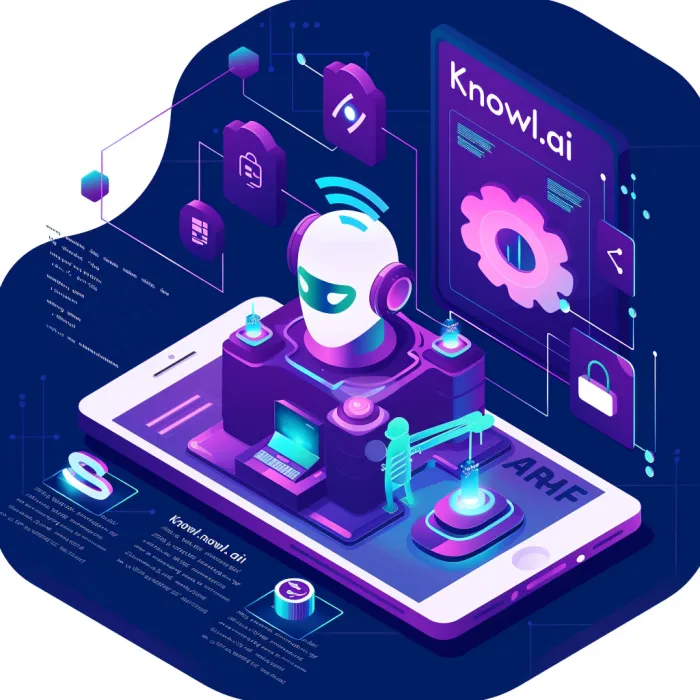What are Large Language Models (LLMs) and APIs?
Large Language Models (LLMs) are advanced artificial intelligence systems designed to understand and generate human-like text. These models, such as GPT (Generative Pre-trained Transformer) series, have revolutionized natural language processing tasks by exhibiting a remarkable ability to comprehend and generate text that is coherent and contextually relevant. LLM APIs provide developers with access to these powerful models, enabling them to integrate natural language understanding and generation capabilities into their applications seamlessly.
Definition and Functionality of LLMs
Large Language Models (LLMs) are built upon deep learning architectures and trained on vast amounts of text data to learn the intricacies of human language. These models utilize sophisticated algorithms to process input text, analyze its context, and generate coherent responses or text continuations. By understanding the semantic meaning of text and capturing syntactic structures, LLMs can perform a wide range of natural language processing tasks, including text summarization, translation, question answering, and content generation.
Overview of APIs for LLMs
LLM APIs provide developers with a convenient interface to interact with large language models, making it easier to incorporate advanced natural language processing capabilities into their applications. These APIs typically offer a set of endpoints that allow developers to send text prompts or queries to the LLM and receive the generated responses or continuations. Additionally, LLM APIs may provide parameters for configuring the behavior of the model, such as the maximum token length or the temperature parameter for controlling the randomness of generated text. By leveraging LLM APIs, developers can create innovative applications ranging from chatbots and virtual assistants to content generation tools.
Key Takeaways:
Large Language Models (LLMs) are advanced AI systems capable of understanding and generating human-like text.
LLM APIs enable developers to integrate natural language processing capabilities into their applications effortlessly.
LLM APIs offer endpoints for sending text prompts and receiving generated responses, along with parameters for configuring the model's behavior.
How are LLMs and APIs Used in Chatbots and Conversational AI?
Large Language Models (LLMs) and APIs play a crucial role in powering chatbots and conversational AI systems, enabling them to understand user queries and generate human-like responses. By leveraging advanced natural language processing techniques, these models can analyze text input, comprehend context, and generate contextually relevant and coherent responses, making conversations with chatbots more seamless and engaging.
Integrating LLMs in Chatbot Development
In chatbot development, integrating LLMs involves accessing their APIs to send user queries and receive generated responses. Developers can leverage pre-trained LLMs, such as OpenAI's GPT series or Google's BERT, to enhance the conversational capabilities of their chatbots. Through API access, developers can seamlessly incorporate LLM-powered text generation into their chatbot applications, providing users with more human-like and contextually relevant interactions.
Generating Conversational Responses with LLM APIs
LLM APIs enable developers to query the model with text prompts or queries and receive generated responses that mimic human-like conversation. These APIs provide endpoints that developers can call to interact with the model, allowing them to configure parameters such as response length, temperature, and top-p sampling to tailor the generated responses to their specific needs. By leveraging LLM APIs, developers can create chatbots and conversational AI systems capable of generating diverse and contextually relevant responses.
Fun Fact: GPT-4, the latest iteration of OpenAI's Generative Pre-trained Transformer, boasts improved autoregressive capabilities and multi-language support, making it a versatile tool for various AI applications.

Configuring LLMs for Conversational AI
Configuring LLMs for conversational AI involves fine-tuning the models on task-specific datasets to improve their performance in generating conversational responses. Through techniques such as transfer learning and fine-tuning, developers can adapt pre-trained LLMs to better understand and generate responses relevant to specific domains or use cases. By fine-tuning LLMs, developers can enhance the quality and relevance of the generated responses, making their chatbots more effective in engaging users and providing valuable assistance.
Key Takeaways:
LLMs and APIs are essential components in developing chatbots and conversational AI systems.
Integrating LLMs into chatbot development involves accessing their APIs to send queries and receive generated responses.
LLM APIs enable developers to generate contextually relevant responses by querying the model with text prompts and configuring parameters.
Fine-tuning LLMs allows developers to adapt the models to specific use cases and improve the quality of generated responses.
What Are the Use Cases and Applications of LLM APIs?
Large Language Models (LLMs) have revolutionized various fields with their ability to generate text that closely resembles human language. LLM APIs, such as GPT-4 and others, offer developers powerful tools to integrate these capabilities into their applications. From sentiment analysis to machine learning projects, the applications of LLM APIs are vast and diverse.
Exploring LLM API Use Cases in Sentiment Analysis
One fascinating application of LLM APIs is sentiment analysis. By analyzing text data, LLMs can determine the sentiment conveyed in a piece of content, whether it's positive, negative, or neutral. This capability is invaluable for businesses looking to understand customer feedback, gauge public opinion, or monitor brand sentiment on social media platforms.
Generating Human-Like Text with LLM APIs
LLM APIs excel at generating human-like text, making them ideal for tasks such as content generation, chatbots, and creative writing assistance. With just a prompt, developers can harness the power of LLMs to produce coherent and contextually relevant text. Whether it's writing articles, composing emails, or crafting marketing copy, LLM APIs offer a wealth of possibilities for generating high-quality content.
Applying LLM APIs in Machine Learning Projects
In the realm of machine learning, LLM APIs serve as valuable tools for various tasks, including natural language processing (NLP), text summarization, and language translation. Developers can leverage pre-trained LLMs to enhance the performance of their machine learning models, improve text comprehension, and enable multilingual capabilities.
Unleashing the Potential of LLM APIs in Natural Language Processing
LLM APIs play a crucial role in advancing natural language processing tasks, enabling computers to understand, interpret, and generate human language. From semantic analysis to language modeling, LLMs empower developers to build state-of-the-art NLP applications that can comprehend and respond to text input with remarkable accuracy.
Key Takeaways:
LLM APIs offer a wide range of applications, including sentiment analysis, content generation, machine learning, and natural language processing.
These APIs enable developers to harness the power of LLMs for tasks such as generating human-like text, enhancing machine learning models, and improving NLP capabilities.
With the availability of various LLM APIs, developers have access to state-of-the-art tools for text generation, analysis, and comprehension.
How to Access and Implement LLM APIs in Various Projects?
Large Language Models (LLMs) are powerful tools that can perform a wide range of tasks, from text generation to question answering. Accessing and implementing LLM APIs in your projects is essential for leveraging their capabilities effectively. Whether you're building an AI assistant, a chatbot, or a language translation tool, understanding how to integrate LLM APIs is crucial for success.
Performing API Calls with LLMs in Python
Python is a popular programming language for AI development, making it an excellent choice for working with LLM APIs. With libraries like Langchain, developers can easily perform API calls to LLMs and process natural language queries. By mastering the art of making API calls in Python, developers can unlock the full potential of LLMs and build innovative AI applications.
Utilizing LLM APIs for Text Generation Tasks
One of the most compelling features of LLM APIs is their ability to generate human-like text. Whether you need to generate articles, emails, or creative content, LLM APIs offer a seamless solution. By providing an input prompt, developers can instruct LLMs to generate text that mimics the style and tone of human writing, opening up endless possibilities for content creation.

Fine-Tuning LLMs for Specific Use Cases
While pre-trained LLMs offer impressive capabilities out of the box, fine-tuning them for specific use cases can further enhance their performance. By training LLMs on domain-specific data or fine-tuning their parameters, developers can tailor these models to suit their project's requirements. Fine-tuned LLMs are better equipped to handle niche tasks and produce more accurate results, making them invaluable assets for AI applications.
Understanding the Integration of LLMs in API Access
Integrating LLMs into API access involves configuring parameters, handling authentication, and managing API requests. Developers must understand how LLM APIs work, including their specific features and limitations, to ensure smooth integration. By gaining insight into the inner workings of LLMs and their API endpoints, developers can build robust and reliable AI platforms that deliver exceptional performance.
Key Takeaways:
Accessing and implementing LLM APIs in various projects require an understanding of API calls, Python programming, and text generation techniques.
Fine-tuning LLMs for specific use cases can significantly improve their performance and accuracy in AI applications.
Integrating LLMs into API access involves configuring parameters, managing requests, and understanding their capabilities to build robust AI platforms.
What Are the Future Trends and Innovations in LLM APIs for 2024?
As we look ahead to 2024, the landscape of Large Language Models (LLMs) continues to evolve with promising trends and innovations. From advancements in natural language processing tasks to the emergence of next-gen LLMs like GPT-4, developers and product managers have much to anticipate in the realm of AI technologies.
Insights into the Next-Gen LLMs and APIs like GPT-4
The arrival of next-generation LLMs like GPT-4 brings exciting possibilities for developers and product managers. With increased computational power, enhanced text summarization capabilities, and improved semantic understanding, these APIs promise to redefine the way we interact with AI technologies.
Exploring Seamless LLM API Configurations for Developers
Seamless API configurations are essential for developers seeking to integrate LLMs into their projects efficiently. Whether it's language translation, semantic analysis, or text generation tasks, configuring LLM APIs with Python code and pre-trained models can streamline development processes and accelerate project timelines.
Key Takeaway:
Explore the features and capabilities of next-gen LLMs like GPT-4 to harness their potential for building advanced AI applications.
Stay updated on future trends and innovations in LLM APIs to leverage the latest advancements for your projects and applications.
Dive into seamless LLM API configurations using Python code and pre-trained models to simplify development workflows and enhance productivity.
The Impact of Anthropic's and OpenAI's Advancements in LLM Technologies
Anthropic and OpenAI are at the forefront of LLM technologies, driving significant advancements in the field. With initiatives like Claude 2 and Llama 2, these organizations are pushing the boundaries of AI capabilities, offering state-of-the-art models for natural language processing tasks and AI applications.
Key Takeaway:
Recognize the impact of Anthropic's and OpenAI's advancements in LLM technologies and explore their offerings for building cutting-edge AI solutions.
FAQs:
Are there free LLM APIs available for developers?
Yes, some LLM APIs offer free access with limited features, allowing developers to experiment and prototype their projects before committing to paid plans.How can developers customize LLM parameters for specific tasks?
Developers can fine-tune LLM parameters using Python code and pre-trained models to tailor them for specific use cases, such as language translation or sentiment analysis.What are some potential AI applications for next-gen LLMs like GPT-4?
Next-gen LLMs like GPT-4 can be used for a variety of AI applications, including chatbots, question answering systems, and content generation tools, thanks to their advanced text generation capabilities.
About Knowl.io
Introducing Knowl.io, the revolutionary AI-driven platform designed to transform how API documentation is created and maintained. Say goodbye to the painstaking process of manually updating specifications with each code change—Knowl.io does the heavy lifting for you. With seamless integration into your development workflow, Knowl.io ensures your API documentation is perpetually accurate, reflecting the latest updates in your codebase without the need for manual annotations or explanations.
At the heart of Knowl.io is cutting-edge AI technology that meticulously identifies endpoints, parameters, and behaviors, crafting detailed and up-to-date API documentation with comprehensive explanations. Trust Knowl.io to elevate your documentation process, making it more efficient and reliable than ever. Ensure your developers and stakeholders always have access to the most current and coherent API documentation with Knowl.io, where innovation meets simplicity.


